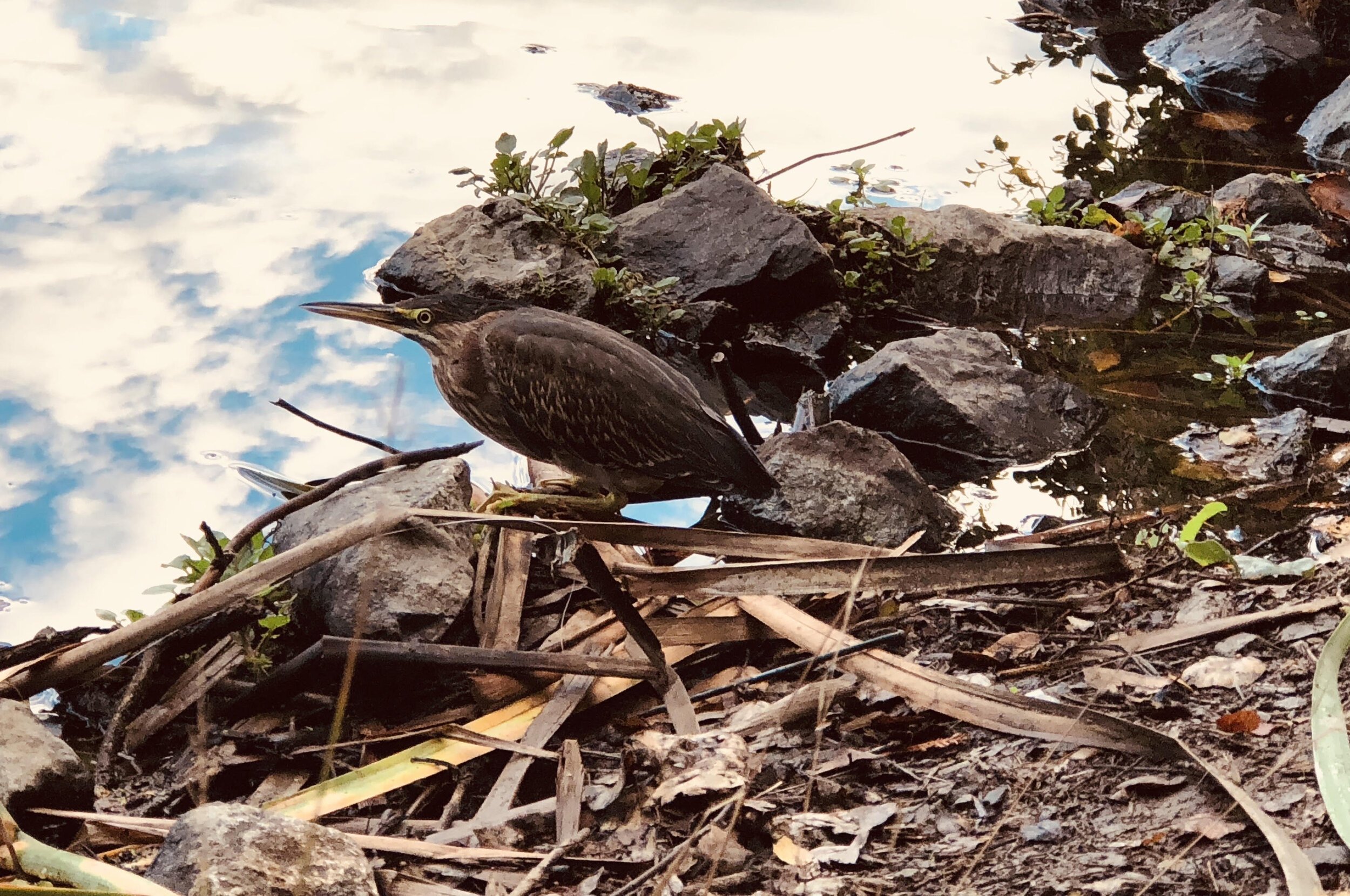Green Birding: A Low Carbon Act of Love
Greater White-fronted Goose in Powderhorn Park, Minneapolis Photo credit: Marian Weidner
Despite their often earthy aesthetic and outdoorsy gear, birders may not always be deserving of their reputation as nature-loving conservationists, especially if you believe that loving something means acting in its best interest. Birding, just like any hobby, can have a negative environmental impact—every flight we take to an exotic locale, every car ride to catch a glimpse of a single rarity comes at the expense of our best efforts to limit our individual & collective carbon footprint. At its extreme, birding—an activity we typically think of as environmentally friendly—can be about as fossil fuel intensive as any travel-based pastime. One birder’s Big Year involved flying 200,000 miles and driving 50,000—these numbers have led some people to reconsider their birding carbon footprint.
It’s easy to become obsessive about birding. The thrill of seeing a lifer and the dopamine hit of submitting a juicy eBird checklist are all a part of what makes birding so much fun. However, as the threat of climate change draws near, it is up to all 45 million of us bird lovers to make sure that in our pursuit of counting beautiful and rare avian species, we remember our stewardship responsibilities to birds and their habitats.
Green heron, observed on a jog Photo credit: Marian Weidner
The last thing anyone wants is a toxic relationship, and that includes our relationship with birds. One way to keep your human-bird relationship healthy is by replacing car and air travel-based birding with green birding. Green birding refers to birding without consuming any fossil fuels- walking, biking, wheelchairing, canoeing, kayaking are all modes of green birding. Thankfully, Minneapolis offers an array of opportunities for green birding adventures with its many lakes, rivers, creeks, paths and parks—not to mention over 300 species of birds in Hennepin County.
While some birders may bristle at the idea of shorter checklists or passing up the chance to jump in the car to see a lifer, it is important to remember that with love comes intimacy. Birding closer to home allows us to observe more deeply and develop a more intimate connection with our surroundings. We can find and monitor nests, we can recognize individuals by their quirks and predilections, and even witness obscure behaviors that we might otherwise miss. Intimate birding allows us to watch hatchlings grow into fledglings, to count and recount the ducklings each day, rooting for their survival. The secret pleasure drawn from dissecting a fresh owl pellet or watching tiny hummingbirds fight viciously over prime flower territory is as deeply satisfying as any big list or rare sighting.
And for those who still need to scratch that competitive itch, the Green Big Year has gained traction in the last few years, with people walking and biking across the country to log as many species as possible, sometimes while even raising funds for conservation efforts. People who may have limited time, resources or mobility can take part in a Green Big Day, Green Big Sit, or even submit a Yard List (the current record is 318 species!). Some birders even keep a green birding life list of all the birds they’ve observed without the use of fossil fuels.
Cedar waxwing in author’s front yard Photo credit: Marian Weidner
As one of the country’s fast-growing hobbies, it’s nice to think about a community of millions of Americans loving and appreciating birds-and that’s a big enough group of people to make a difference by doing our best to limit the harms we might do to birds by going to see them. Even if you don’t drop all birding activities involving cars and planes, you can green up your birding practices by being more selective about bird-related travel and focusing on quality versus quantity.
This spring, try taking advantage of the Twin Cities’ glorious waterways, pedestrian & bicycle paths, as well as our numerous birding hotspots. Take a picnic out for a Green Big Sit or organize a Green Big Paddle on the Chain of Lakes, you might be surprised by what you find.
Marian Weidner is an Audubon Chapter of Minneapolis board member.



